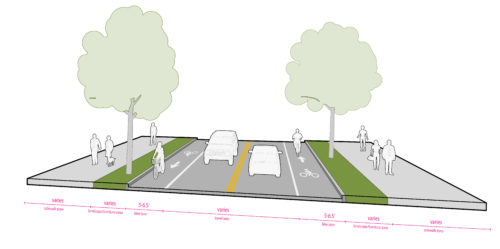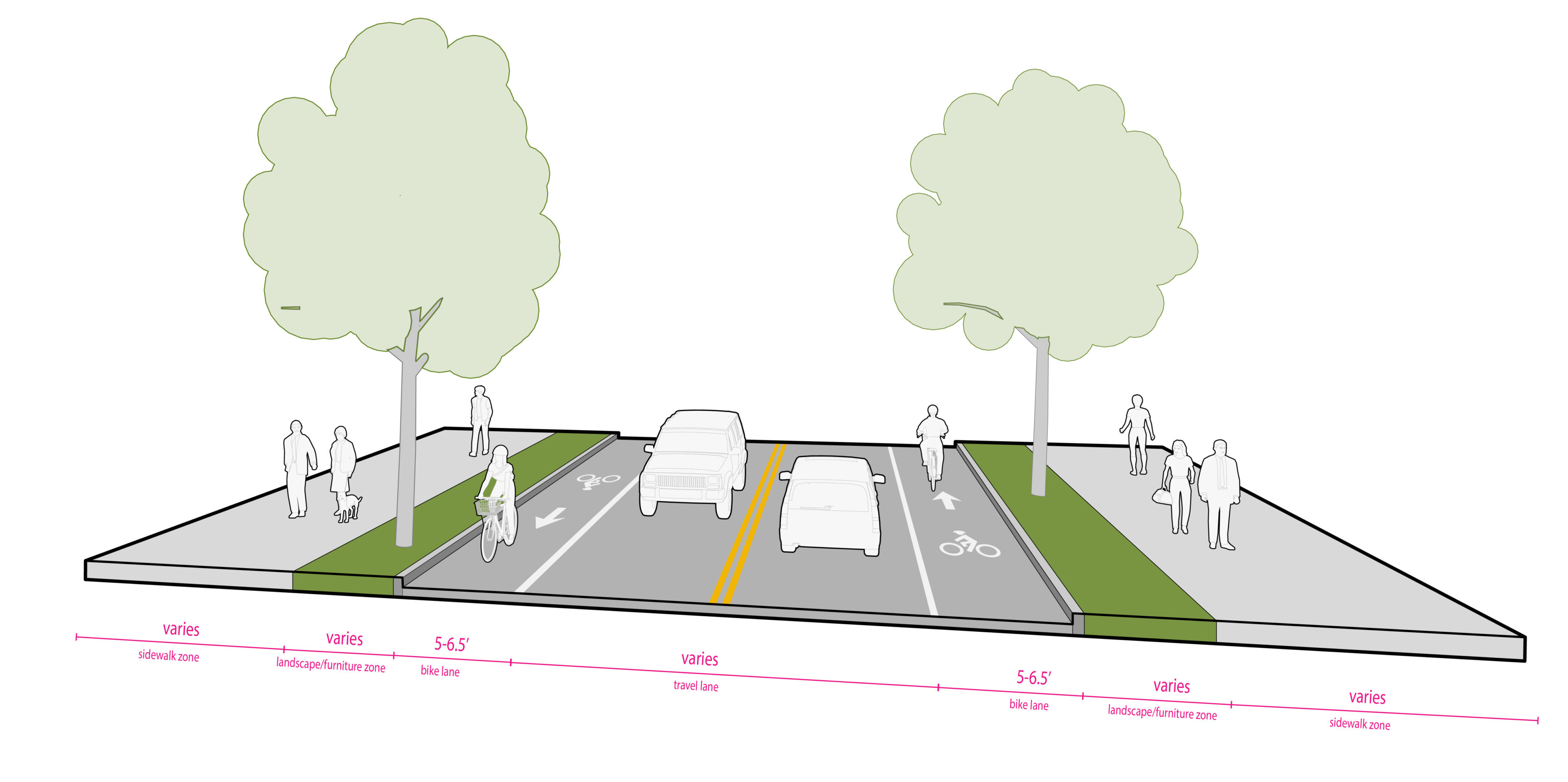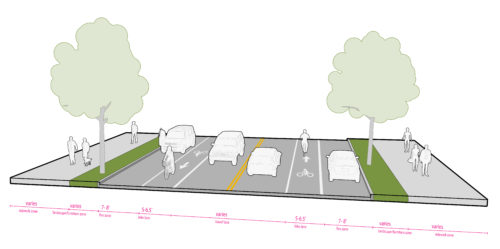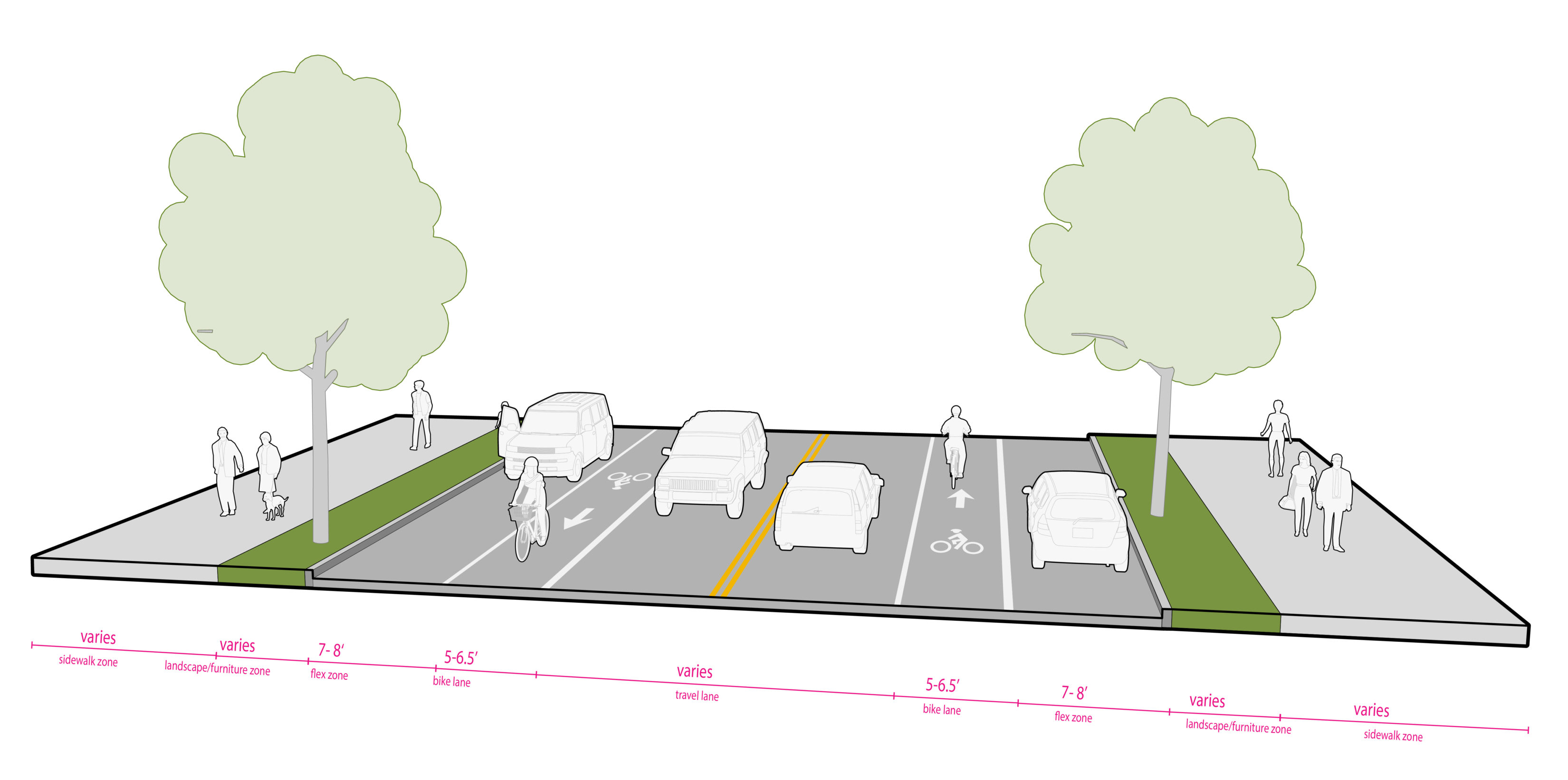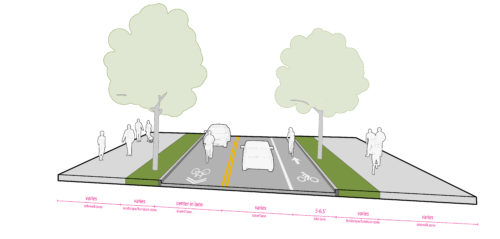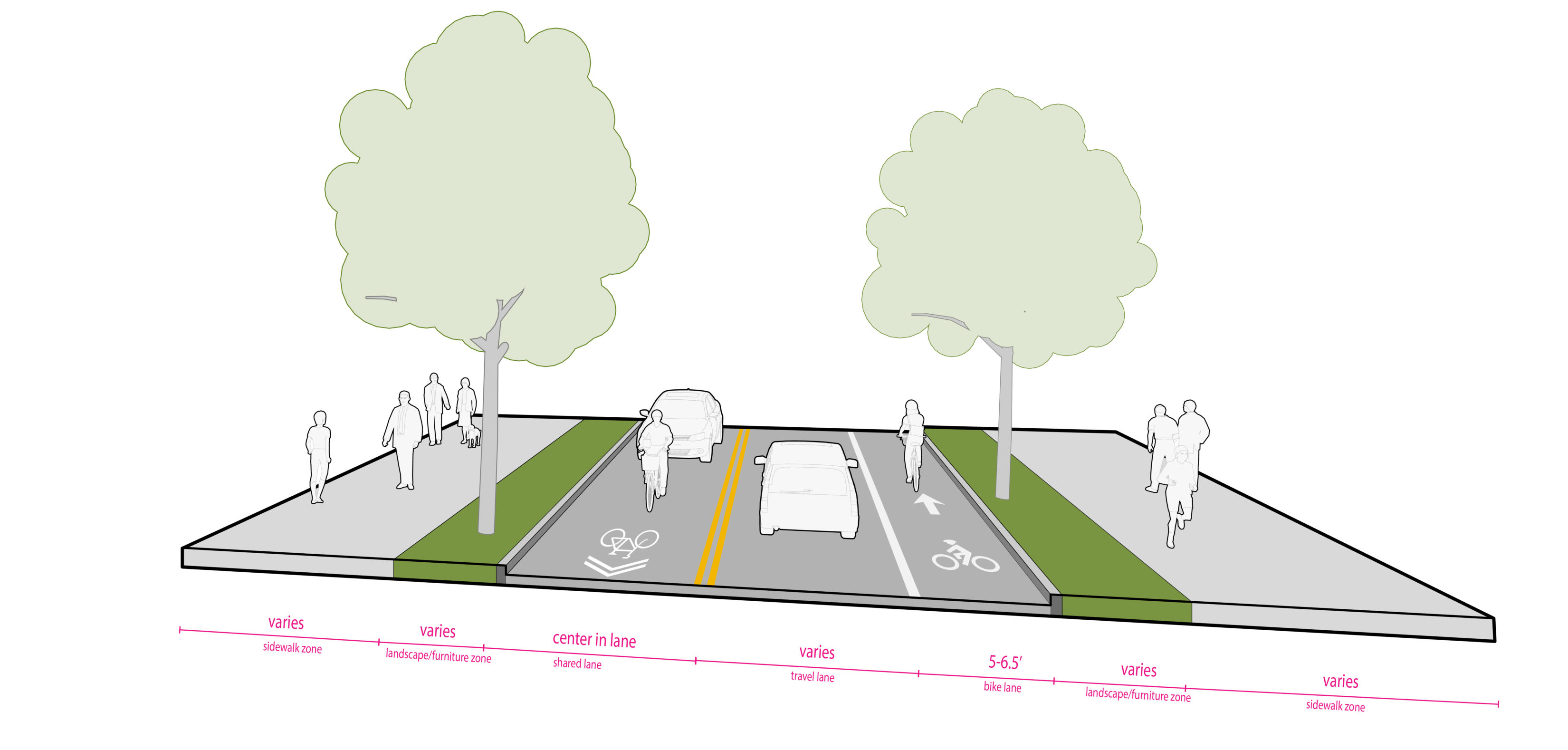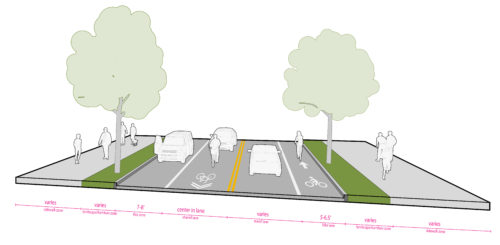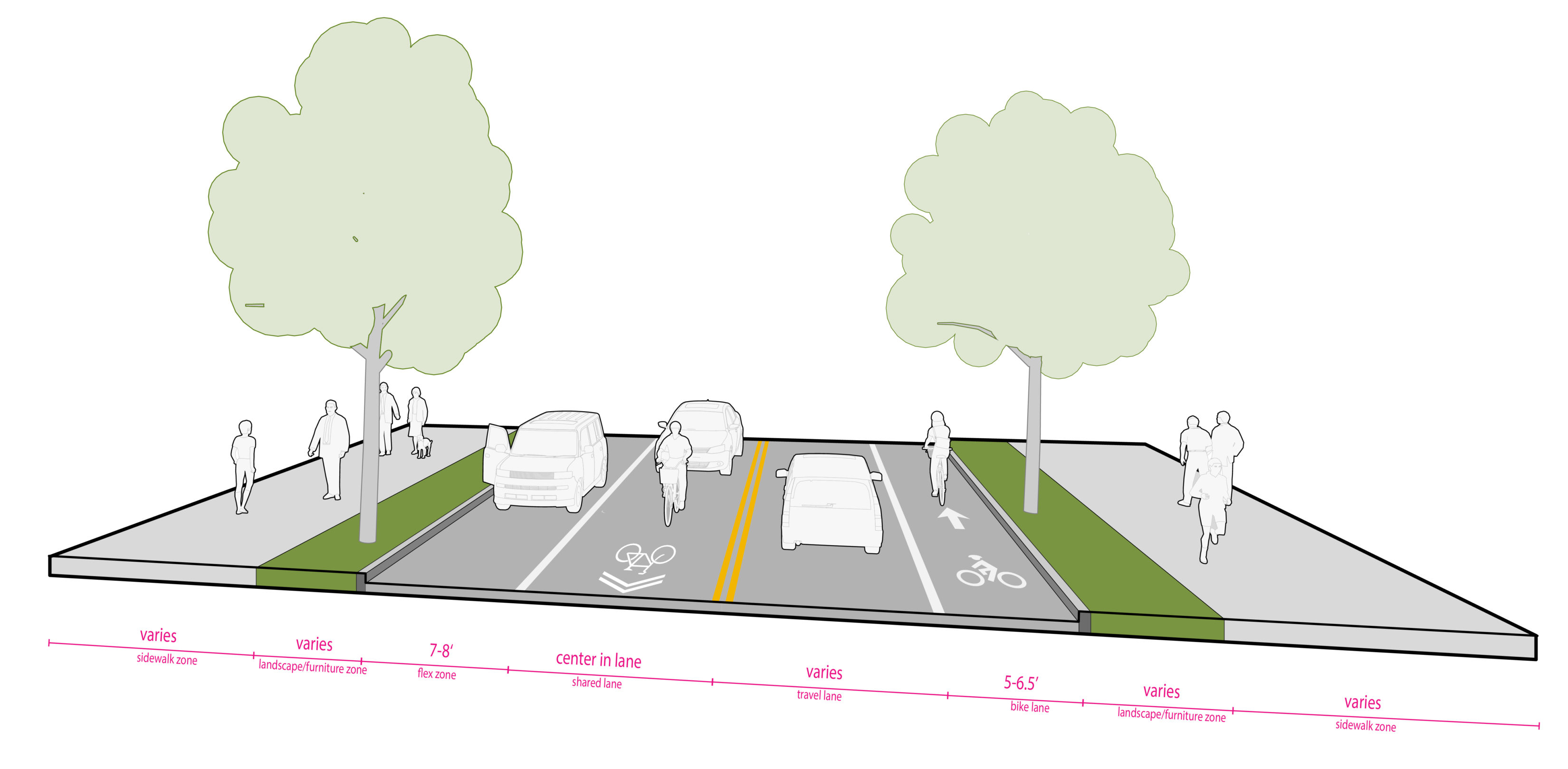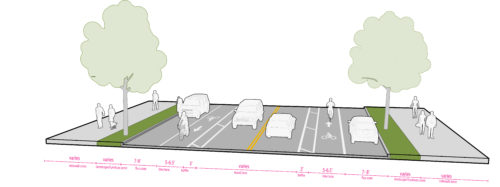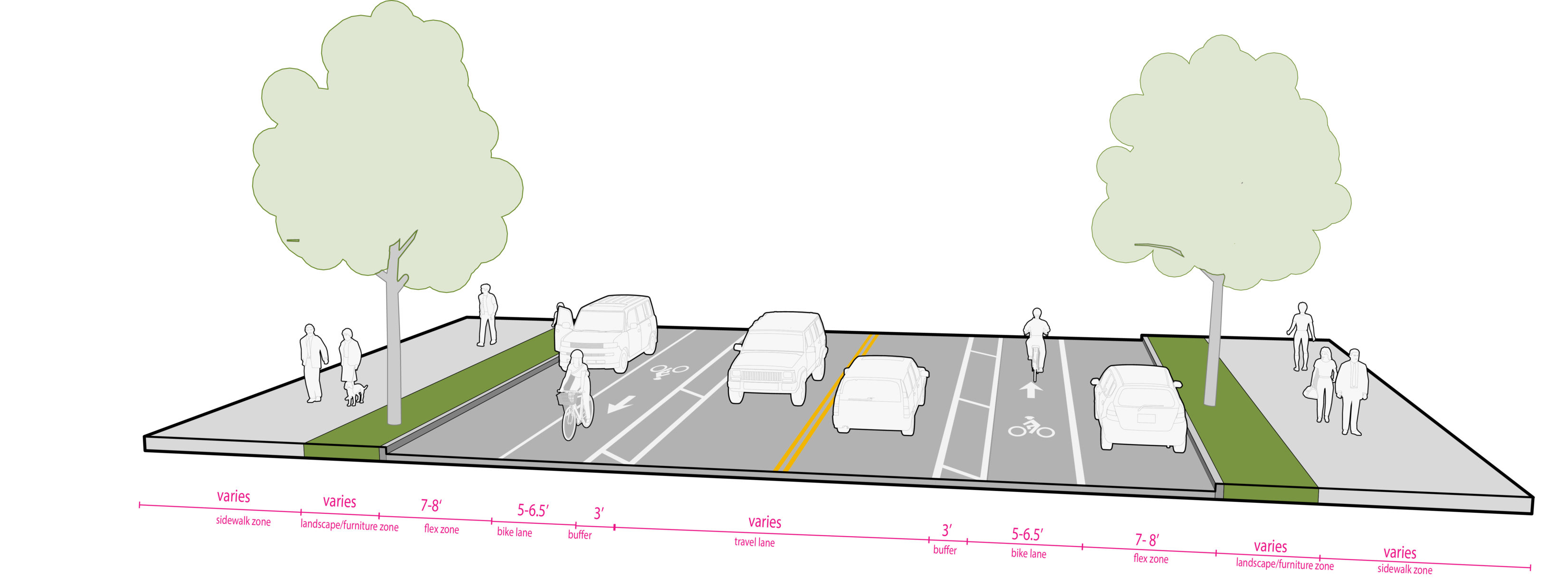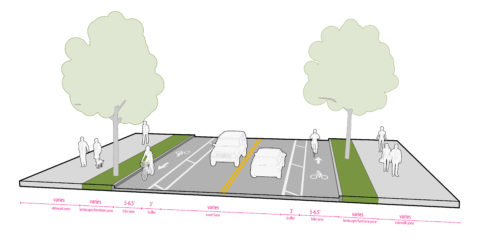In-Street, Minor Separation
In-street, minor separation is appropriate when motor vehicle volumes and speeds are too high for a shared lane, space is not available for a protected bike lane, or when traffic calming techniques are not available or appropriate. Treatments include bicycle lanes, buffered bike lanes, contra-flow bike lanes on one-way streets to provide better connectivity, and uphill climbing lanes paired with downhill shared lane markings.
Design Standards
Bicycle Lane Width:
- 5 feet minimum adjacent to a curb or an 8 feet minimum parking lane
Design Guidance
In order to maximize bicyclist comfort and reduce potential conflicts associated with opening car doors, bicycle lanes should be as wide as feasible up to a maximum width of 7 feet. Where there is additional space, a buffer should be considered.
- 6 feet minimum when adjacent to 7 feet parking lane or where there is high parking turnover
- 7 feet on uphill sections or where there are frequently high volumes of bicyclists to allow for in-lane passing.
Climbing Bike Lanes
Uphill bike lanes (also known as “climbing lanes”) enable motorists to safely pass slower-speed bicyclists, thereby improving conditions for both travel modes. Uphill bike lanes can be combined with shared lane markings in the downhill direction, where bicyclists can match prevailing traffic speeds.
Design Standards
-
Bicycle Lane Width: 5 feet;
-
If there is not sufficient space for a bike lane in both directions, use a Shared Lane Marking (see Shared Lanes for design standards) on downhill section.
Design Guidance
This treatment is often used as a retrofit, in cases where space constraints do not allow for bicycle lanes in both directions.
Buffered Bike Lanes
Buffered bike lanes are conventional bicycle lanes paired with a designated street buffer space separating the bicycle lane from the adjacent motor vehicle travel lane and/or parking lane.
Design Standards
- Buffer width shall be a minimum 3 feet.
- Buffer zones 4 feet or greater in width shall be marked using a crosshatch pattern.
Design Guidance
The location of the buffer is between travel lanes and bike lanes. The buffer may be placed between the bike lane and parking lane where parking turnover is high or on extended downhill segments where bicyclist speeds can be expected to be higher than normal. In constrained segments, bicycle lanes may be narrowed to a minimum of 4 feet exclusive of the buffer as long as the total combined width with buffer is not less than 6 feet.
Contra-Flow Bike Lanes
A contra-flow bicycle lane operates in the opposite direction of motor vehicle traffic allowing two-way bicycle traffic while the street remains one-way for motorized traffic.
Design Standards
- The contra-flow bicycle lane may be basic or protected. It shall be separated from the opposing direction of traffic by solid double yellow lines.
- An “EXCEPT BIKES” plaque should be posted beneath “DO NOT ENTER” signs (R5-1) or turn prohibition signs, if present, to permit two-way traffic use by bicycles at all street intersections.
Design Guidance
- Contra-flow bicycle lanes should only be considered where high volumes of bicyclists are already riding the wrong way, on corridors where alternate routes require excessive out-of-direction travel and on corridors where alternate routes are infeasible due to safety and/or operational issues.
- A bicycle lane or protected bike lane in the same direction of traffic should complement the contra-flow lane where space is available. Where the roadway is too narrow for a bike lane or protected bike lane, the travel lane should be marked with shared lane markings.
- It may be beneficial to mark all street crossings with bike lane extensions to increase awareness of the contra-flow movement. The bike lane extension may include green pavement markings.
- At intersections it is important to ensure traffic controls are installed and visible to bicyclists for the contra-flow movement where applicable. This may require the installation of stop signs, yield signs, bicycle signals, or traffic signals.

